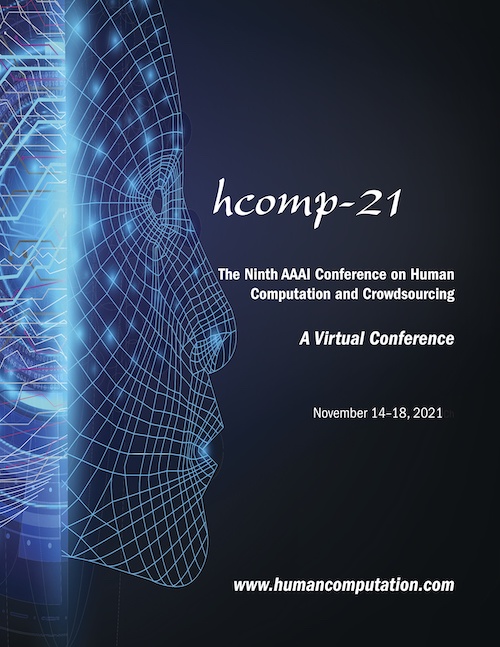Utility of Crowdsourced User Experiments for Measuring the Central Tendency of User Performance to Evaluate Error-Rate Models on GUIs
DOI:
https://doi.org/10.1609/hcomp.v9i1.18948Keywords:
User Performance Modeling, Fitts' Law, Graphical User Interface, Error Rate Prediction, Target PointingAbstract
The usage of crowdsourcing to recruit numerous participants has been recognized as beneficial in the human-computer interaction (HCI) field, such as for designing user interfaces and validating user performance models. In this work, we investigate its effectiveness for evaluating an error-rate prediction model in target pointing tasks. In contrast to models for operational times, a clicking error (i.e., missing a target) occurs by chance at a certain probability, e.g., 5%. Therefore, in traditional laboratory-based experiments, a lot of repetitions are needed to measure the central tendency of error rates. We hypothesize that recruiting many workers would enable us to keep the number of repetitions per worker much smaller. We collected data from 384 workers and found that existing models on operational time and error rate showed good fits (both R^2 > 0.95). A simulation where we changed the number of participants N_P and the number of repetitions N_repeat showed that the time prediction model was robust against small N_P and N_repeat, although the error-rate model fitness was considerably degraded. These findings empirically demonstrate a new utility of crowdsourced user experiments for collecting numerous participants, which should be of great use to HCI researchers for their evaluation studies.Downloads
Published
2021-10-04
How to Cite
Yamanaka, S. (2021). Utility of Crowdsourced User Experiments for Measuring the Central Tendency of User Performance to Evaluate Error-Rate Models on GUIs. Proceedings of the AAAI Conference on Human Computation and Crowdsourcing, 9(1), 155-165. https://doi.org/10.1609/hcomp.v9i1.18948
Issue
Section
Full Archival Papers

